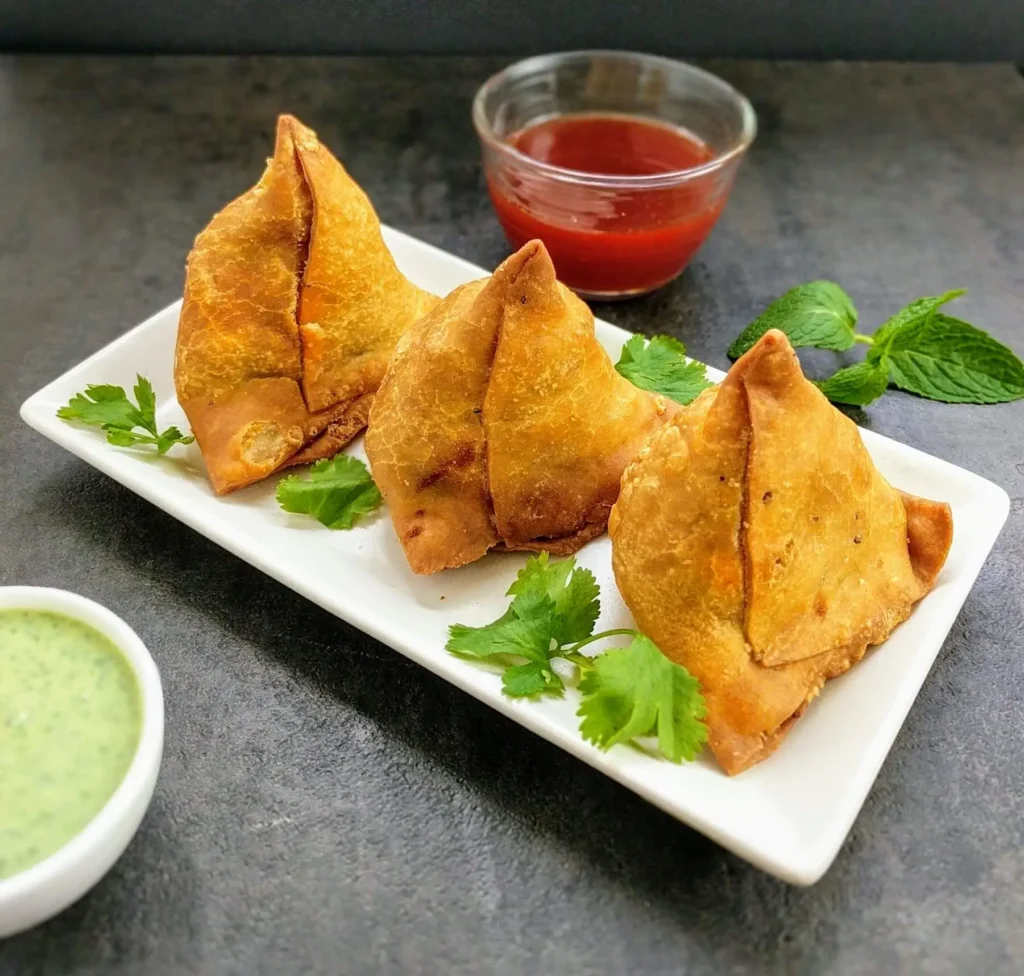Samosa is a beloved culinary delight that originated in India and have become popular worldwide. These triangular pastries are known for their golden, crispy exterior and flavorful fillings, making them a cherished snack, appetizer, or street food in many cultures. Let’s dive into the delicious world of samosas.

The Samosa’s Origin:
Samosas have a rich history dating back to the 9th century in the Middle East. They were introduced to the Indian subcontinent during the Delhi Sultanate in the 13th century and evolved into the iconic snack we know today.
Regional Variations:
Highlight the regional diversity of samosas in India. For example, Punjabi samosas are different from Bengali or South Indian variations. Discuss the variations in fillings and spices used in different regions.
Street Food and Beyond:
Explore the popularity of samosas as a beloved street food snack in India. Mention how they are also served in restaurants and at home, both as snacks and appetizers.
The Art of Making Samosas:
Samosas consist of three main components:
The Pastry:
Samosa dough is traditionally made with flour, water, and a touch of oil or ghee. It’s kneaded to create a smooth, elastic texture, then rolled into thin sheets and cut into triangles or circles.
The Filling:
Samosa fillings can vary widely. The most common is a mixture of spiced potatoes, peas, and aromatic spices like cumin, coriander, and garam masala. Other fillings include minced meat, lentils, or paneer (Indian cottage cheese).
The Folding:
Samosas are folded by hand into their distinctive triangular shape. The edges are sealed with a simple flour-and-water paste to ensure the filling stays intact during frying.
Varieties of Samosas:
Samosas have evolved over the years, giving rise to various regional and creative variations. Some popular types include:
Vegetable Samosa:
Filled with a mixture of spiced potatoes, peas, and sometimes carrots.
Keema Samosa:
Stuffed with spiced minced meat, such as lamb or chicken.
Paneer Samosa:
Filled with a crumbly paneer and spice blend.
Sweet Samosa:
A dessert version filled with sweet fillings like jaggery, nuts, and dried fruits.
Serving and Accompaniments:
Samosas are often served with tangy tamarind chutney or mint chutney, enhancing their flavors. They’re a popular street food in India and can be found in local markets and at roadside stalls.
Cultural Significance:
Samosas hold a special place in Indian culture and are often served at festive occasions, gatherings, and celebrations. They’re a symbol of culinary diversity and the rich tapestry of Indian cuisine.
Global Popularity:
Samosas have gained international acclaim and can be found in various corners of the world, from Indian restaurants to global fast-food chains.
Accompaniments:
The common chutneys and sauces that are served with samosas, such as tamarind chutney, mint chutney, or yogurt-based dips.
Conclusion:
Samosas are more than just a snack; they’re a culinary treasure that represents the fusion of flavors, cultures, and traditions. Whether enjoyed as a quick bite, an appetizer at a party, or a comforting street food snack, samosas continue to delight taste buds and bring people together in the joy of good food.
